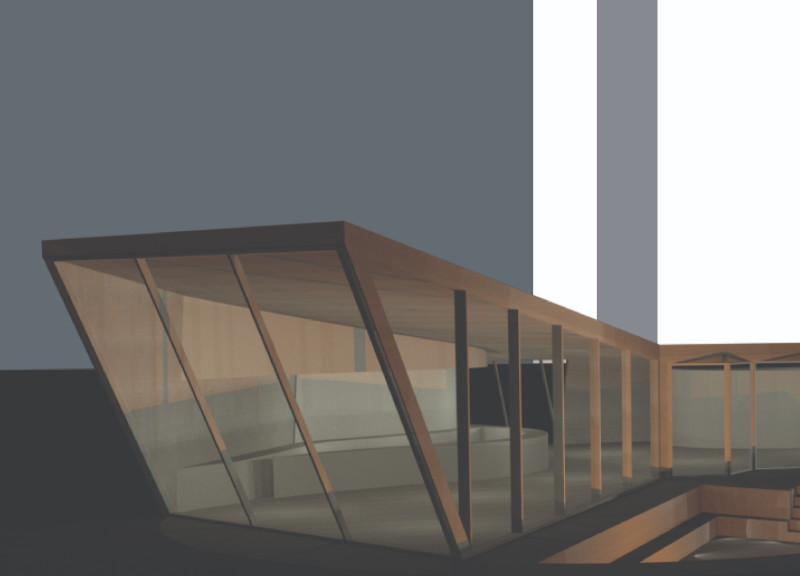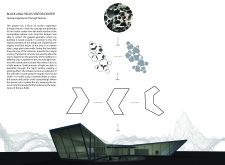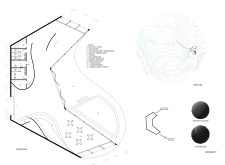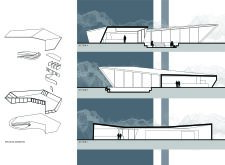5 key facts about this project
Designing this center involved a thorough analysis of its surroundings, which informed the building's form, materiality, and layout. The architectural design reflects the rugged textures of the lava formations, utilizing angular geometries that resonate with the landscape’s characteristics. The roofline and structural form not only draw attention from afar but also create a cohesive relationship with the terrain.
Innovative Engagement with Environment
The Black Lava Fields Visitor Center stands out due to its innovative engagement with the volcanic landscape. Its form incorporates elements that mimic the organic shapes found in nature, facilitating a seamless integration with the environment. The use of translucent concrete allows natural light to filter through the walls, creating unique internal atmospheres that change throughout the day. This design choice invites visitors to remain attentive to their surroundings while enhancing the overall sensory experience.
Additionally, key functional areas within the center are thoughtfully arranged to encourage exploration and interaction. The layout includes strategically placed viewing areas and outdoor terraces that extend the internal experience outward, reinforcing the connection between the architecture and the geological landscape. The incorporation of communal spaces, such as a sunken lounge featuring a fire pit, fosters social engagement among visitors, enhancing the center's role as a gathering place.
Material Selection and Sustainability
The selection of materials for the Black Lava Fields Visitor Center is notable for both its sustainability and its alignment with the surrounding landscape. Charred timber is used throughout the building to reflect elements of the volcanic environment while promoting environmental mindfulness. This choice not only serves an aesthetic purpose but also contributes to the building's durability.
Translucent concrete is another significant material, offering a modern touch while maintaining a connection to historical volcanic formations. The design integrates these materials into a cohesive aesthetic that complements the visitor center’s purpose and enhances the understanding of the natural world.
For a comprehensive understanding of this architectural project, consider exploring the architectural plans, sections, and designs that elaborate on these elements further. A detailed examination of the architectural ideas behind this center will provide valuable insights into the design's effectiveness in achieving its functional and experiential goals.


























